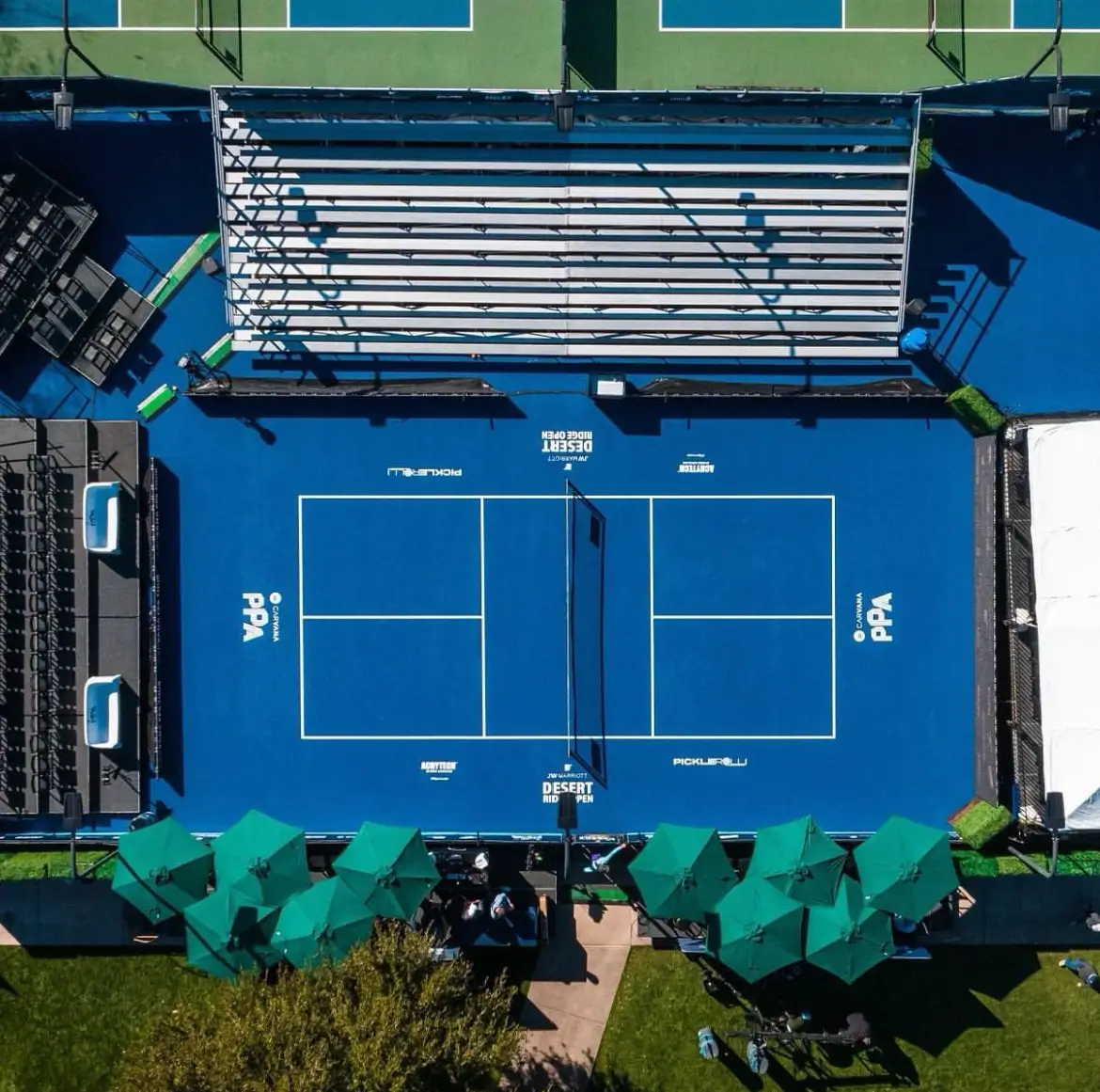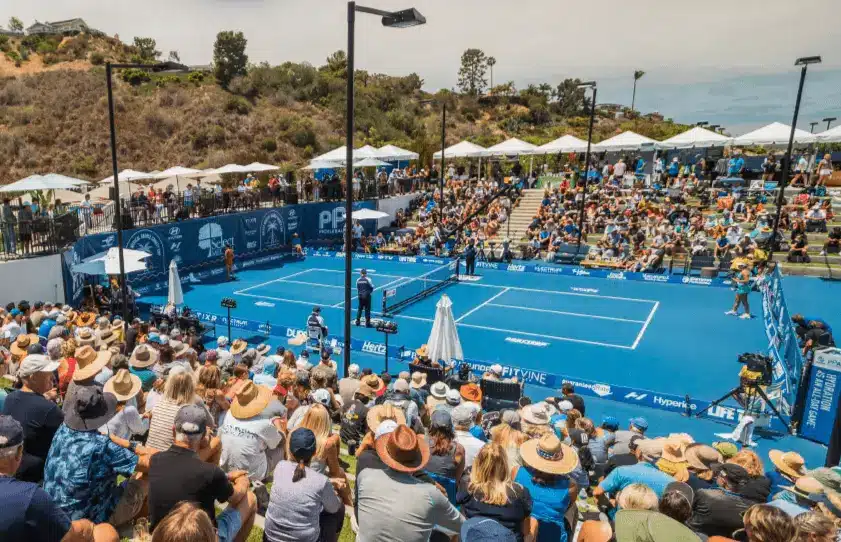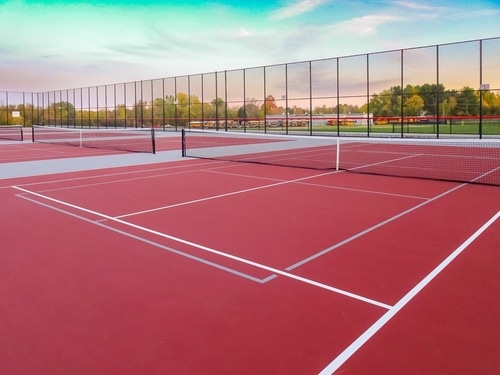How to play pickleball – Rules of the Game
| February 28, 2024

You’ve secured a court, got your gear, paddles, and balls are a go and your group of four is ready to hit the court.
Now, how the heck do you play?
While somewhat intimidating at first, once you learn the rules your enjoyment of the game will increase.
This rules summary will tell you everything you need to know about the game – from the basic rules, the serve, the two-bounce rule, the non-volley zone, the underhand serve, how to score points, keep score properly and get you set for both singles and doubles.
Ready? It’s 0-0-2. And yes, you’re definitely going to find out what that means, too.
Let’s start with the scoring, talk about the serve, and go from there.
(After you have read more about how to play pickleball, you can also learn more about what is pickleball)
Scoring
Before the ball is put in play the server announces the score. This is done, not only to let each of the players know what the score is but to also signify the serve is getting ready to happen. It allows everyone to get ready and not be surprised when the ball is served.
In doubles play, which is where most new players learn the game, the server announces a series of three numbers – the first is the serving team’s points, the second is the receiving team’s points and the third number identifies which server position is serving. The third number is always one or two.
Points can only be earned by the serving team. If the serving team hits a ball out of bounds, the receiving team will not earn that point. Each time a point is earned, the server and their partner switch sides of the court and the server puts the ball into play by hitting into the opposite diagonal box on the other end of the court.
Games are played to 11 and the margin must be by two points. In other words, a team does not win at 11-10 but could win at 12-10, or 13-11, or 14-12. You get the idea.
When your team earns the right to serve, either by the start of the game or by getting a side-out, the person on the right side of the court becomes server “1” and the person on the left is server “2.”
Consider this example: Let’s say the serving team has five points and the receiving team has 8. The person on the right side of the court would then announce, “5-8-1.”
When the serving team makes a fault, the second partner serves the next ball into play and the third number changes from a “1” to a “2.” Consider this example, at 5-8-1, the server hits the ball out of bounds. Their partner then announces the score before the serve as 5-8-2. And now, if the serving team commits another fault, like hitting the ball out of bounds or committing a violation, the receiving team becomes the serving team and the score would then be announced as 8-5-1.
Remember, both team members get to serve at least once before the receiving team gets a chance to serve. Once the second fault is made, the ball goes to the receiving team. This is called a side-out.
In singles the rotation is easy. The serving starts from the right side of the court. If the server wins the point, he or she would then serve from the left, rotating back and forth each time a point is earned. Once the serving team loses a rally, the ball goes to the other player, starting from the right side of their service court. Learn more about pickleball scoring with our scoring guide.
Serving
While there are two ways to legally serve the ball, the volley serve is the most commonly used approach. A volley serve is when the player hits the ball out of the air without letting it bounce.
In pickleball, a volley serve must be underhanded. An underhand serve is determined by striking the ball with the ball below your waist and your arm moving in an upward direction. The highest part of the paddle head has to be below your wrist.
A “drop-serve,” when the ball is dropped to the ground before the server makes contact, can be hit in any manner. Players are not allowed to toss the ball up or throw the ball down when using the “drop serve.” It has to simply be dropped. A player may toss the ball high or low or in any manner if that player uses a volley serve.
Regardless of the type of serve, for it to legally be put in play, it must be done from behind the baseline and it must land in the diagonal box on the opponent’s side of the court beyond the non-volley zone.
(Learn more pickleball serving rules and the basics of how to serve)
Let’s Play Pickleball
OK, you’ve got the basic idea of how to serve. You have an idea of how to keep score. All you need now is a few friends and to get out there and get it done.
Take a look at the court. See the area that’s divided with a horizontal line seven feet from the net on either side? That’s the non-volley zone. A lot of players call it “The Kitchen,” but for beginners, it will be more helpful to you to know it as its official name.
The non-volley zone means you can not be touching the line or be inside of the area and volley the ball. Again, a volley is when a ball is struck out of the air with the paddle. Keep in mind, the non-volley zone is no more and no less than what its name says. You can enter the non-volley zone at any time. You can stay in the non-volley zone for as long as you want. There are no restrictions on the non-volley zone other than not being able to hit the ball in the area while you’re in there. If the ball is in the area, it may be struck, but it just can’t be struck when the ball is in the area. Just remember that and you’ll be fine.
If you volley a ball outside the area, that is a legal shot. However, if you lose your balance, step on the line, or fall into the non-volley zone even after striking a shot out of the air, it is a fault. If the momentum from a volleyed shot causes the player to step in or touch the line of the non-volley zone it’s a fault. There is no time limit on how long momentum lasts.
The Two-Bounce Rule
Simply put, the ball must bounce once on each side of the court before any player on either side of the net can play the ball on a volley.
The receiving team must wait for the served ball to bounce and the serving team must wait for the return of the serve to bounce before playing a volley.
This rule is unique to pickleball and differentiates it from tennis. It’s a rule that keeps the serving team from putting the ball in play, rushing up to the net, and spiking it out of the air. The serving team has to wait for the return, no matter if it’s high, low, soft, slow, short, or deep. This is a unique element to pickleball and also is one of the reasons so many people of different skill abilities can play and have a great time.
A slow return still requires the serving team to wait on the ball to bounce before hitting its next shot. A high return requires the serving team to wait for the ball to bounce before hitting its next shot.
Once the ball has bounced once on each end of the court any player in any position may volley the ball so long as the player is not in the non-volley zone.
In singles, the rules are the same. The two-bounce rule and the non-volley zone rules still apply. The only difference is the server gets only one fault before the side-out. In doubles play, the receiving team doesn’t get the opportunity to become the server team until two faults are made.
0-0-2
While somewhat daunting, just grab a paddle and get out there. Truly there are just a few rules and none take too much time to understand and master.
Remember, the rules for the non-volley zone and the two-bounce rule are the ones to remember.
In pickleball, all the lines are considered “in,” except for the non-volley zone line which is considered “out.” If you hit the serve on the non-volley zone line it is not a legal serve. If you are standing on the non-volley zone line or your momentum makes you touch the non-volley zone line, you are deemed to be “in” the non-volley zone so that means it is a fault on you.
There are a few common ways for a team to commit a fault.
- Hitting the ball out of play or into the net where the ball does not get over the net.
- Not hitting the ball before it bounces twice. This is not to be confused with the “two-bounce” rule. Any shot may be played after it has bounced once but once the ball hits the ground a second time, it is considered a “dead” ball and cannot be played.
- Volleying the ball while standing on the line of the non-volley zone or volleying the ball while in the non-volley zone, and this includes falling into the non-volley zone after a volleyed shot.
Only the scoring team can score points, so maintaining the serve is crucial to winning. If the serving team commits a fault, the receiving team doesn’t win a point, but the serving team doesn’t earn one either.
If the serving team wins a rally a point is earned. If the serving team commits a fault, it either goes to the second server or if the fault was made when the second server put the ball in play it becomes a side-out.
A pickleball match is typically the first team to win two games. Usually, games are to 11 points, but some can be played to 15 or even 21.
Pickleball is a great game and the community of pickleball players is generally welcoming and hospitable. If you are near a court, and want to try and play, just show up, tell someone you’re new, and more often than not you will be helped along.
Get out there and give it a try. Everyone has to start from the beginning and soon enough you’ll be helping people along their pickleball journey, too.
(Now that you have a good idea of how to play pickleball, learn the correct pickleball etiquette to make your game a better experience.)





